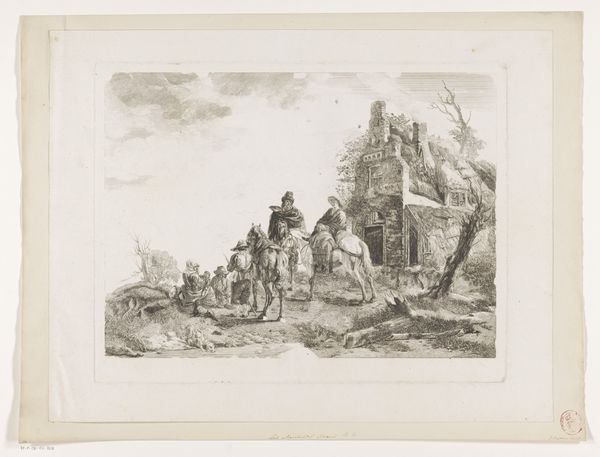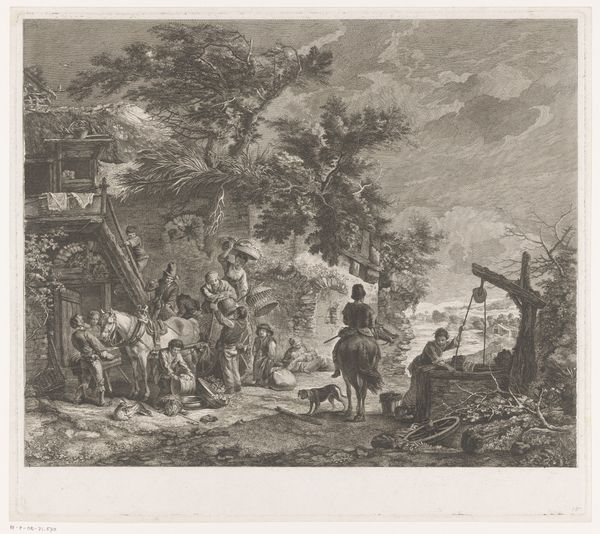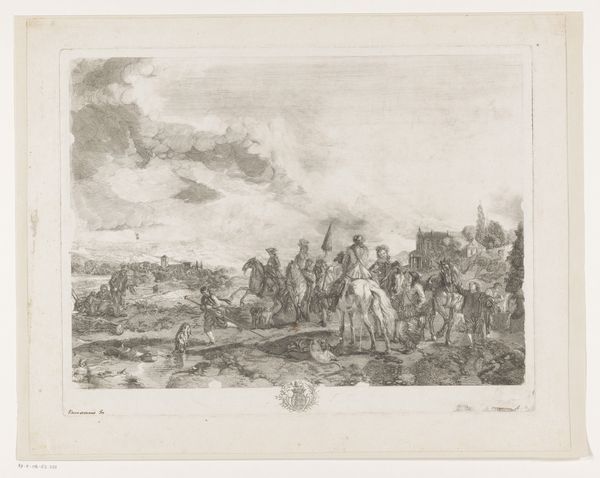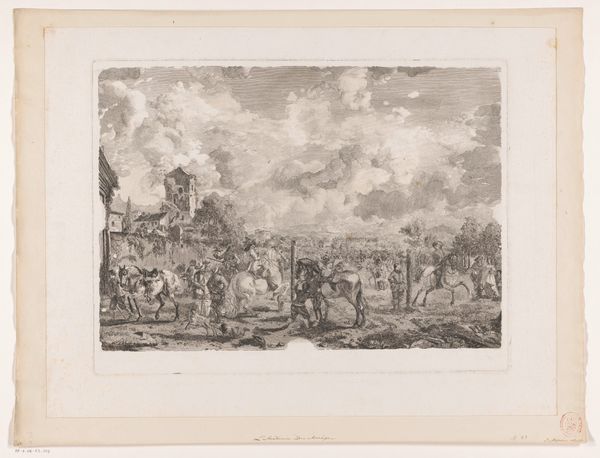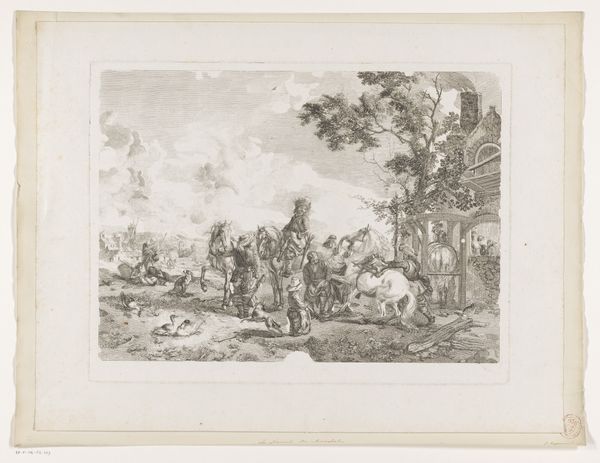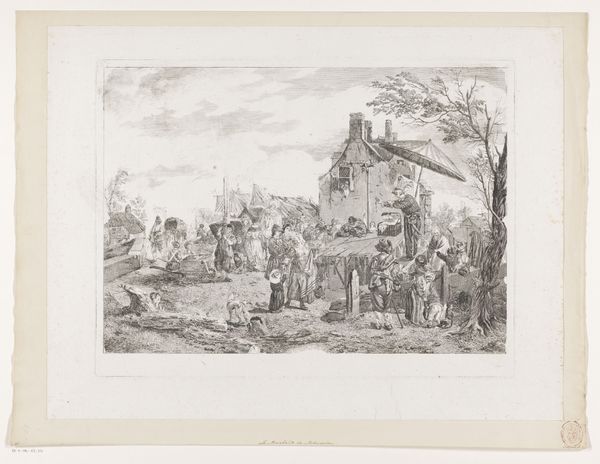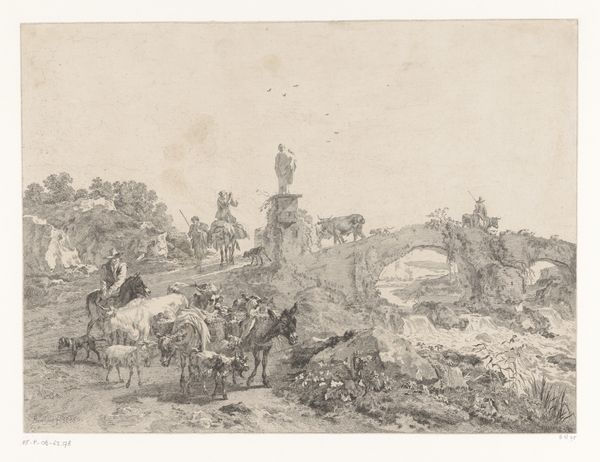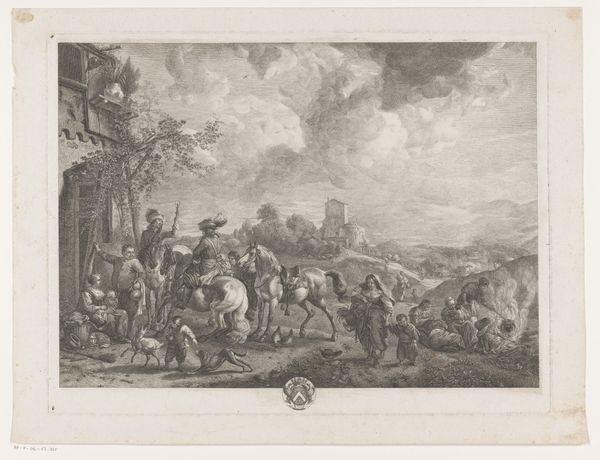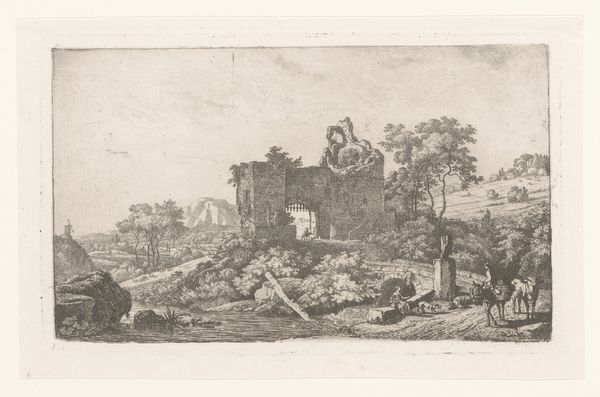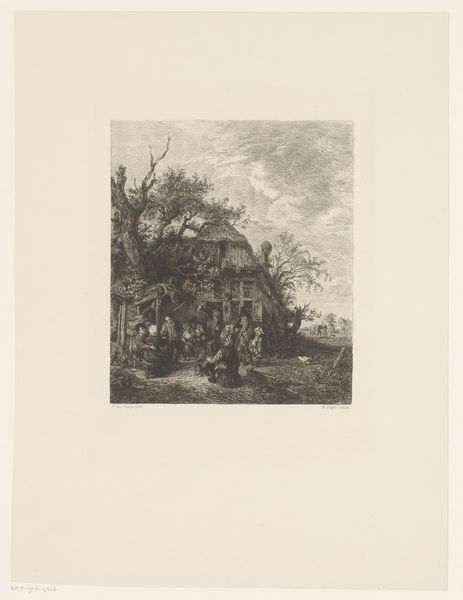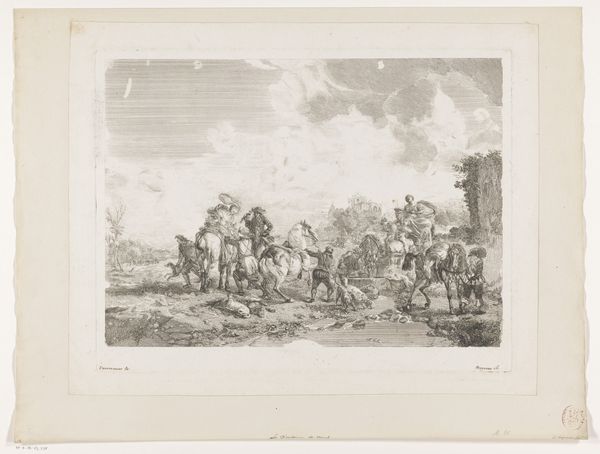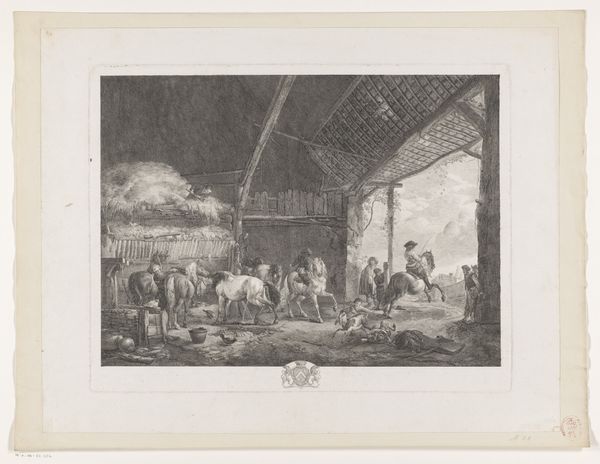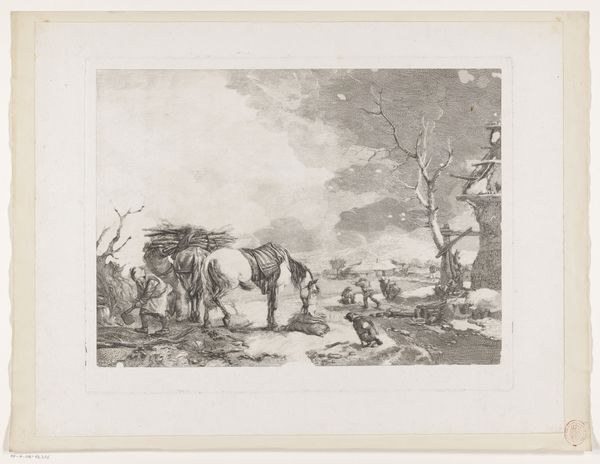
print, etching, engraving
#
pencil drawn
#
baroque
# print
#
etching
#
landscape
#
charcoal drawing
#
figuration
#
pencil drawing
#
line
#
genre-painting
#
graphite
#
engraving
#
realism
Dimensions: height 369 mm, width 477 mm
Copyright: Rijks Museum: Open Domain
Curator: This etching, titled "Marskramers voor een huis," translating to "Peddlers before a house," comes to us from the mid-18th century, crafted by Jean Moyreau. I find myself drawn to the detailed rendering of this Dutch scene. Editor: There's a somber, almost subdued quality to the scene. The light feels quite diffuse and even, and the tonal range—largely restricted to shades of grey—only furthers the overall melancholic effect of this seemingly simple depiction. Curator: Indeed. Moyreau's skills shine through in the precise use of line and shading to describe the forms and textures. The worn surfaces of the house, the clothing of the peddlers, the very rendering of the horses – all of this speaks to Moyreau’s experience in conveying realistic visual detail. One must also consider the labor-intensive process of creating such prints. The careful etching into a metal plate and the numerous printings it must have entailed suggests a complex network of workshop practices and commerce. Editor: Note, too, how the artist employs varied densities of line and hatching, to suggest form and recession. Look, in particular, at the figures around the tree in contrast to the architecture, noting the light falling in different ways. Compositionally, he uses a series of diagonals and orthogonals—lines which appear to converge at a single point—to lead the viewer’s eye deeper into the scene, successfully evoking an implied three-dimensionality on an otherwise two-dimensional surface. Curator: The presence of peddlers reminds us of a key feature in this era, as such itinerant merchants served vital roles for communities with limited local markets, by bringing supplies such as tools and fabrics. It’s clear this artwork wasn't intended as a mere aesthetic object, but one with a utilitarian function too; prints such as this would have served practical needs in everyday life – possibly to function as visual records of economic exchange in this area. Editor: In the final assessment, the interplay of tone, line, and form serves not just to capture but transform reality—a demonstration of artistic mastery to generate visual experiences. I find myself admiring how such fundamental graphic elements can generate such richness of expression. Curator: Agreed. Considering both the artist’s mastery of the intaglio process and its depiction of period-specific economic dynamics, this print offers invaluable insight into the complex matrix of culture, commerce and labor during this historical period.
Comments
No comments
Be the first to comment and join the conversation on the ultimate creative platform.
